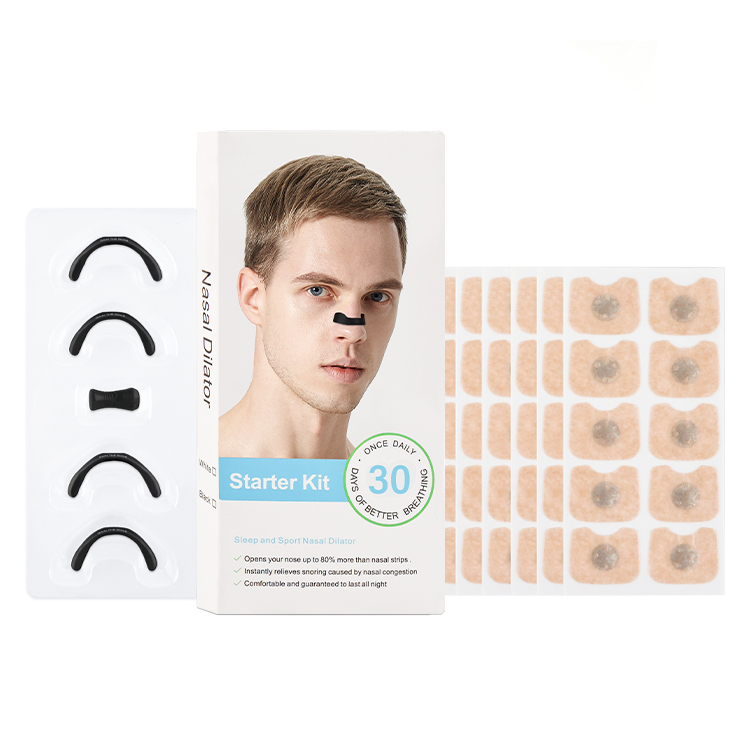Beim Sport verwenden Profisportler oder Menschen, die Sport lieben Kinesiologisches Tape für das Knie, um Knieproblemen vorzubeugen, sie zu unterstützen oder sie zu heilen. Es schützt das Kniegelenk, verbessert die Leistung und verringert das Risiko schwerer Verletzungen. Wenn Sie sich am Knie verletzen, ist es wichtig zu wissen, welcher Sportverletzungs-Tape-Streifen für Sie geeignet ist und wie Sie ihn richtig verwenden, um Sie auf dem Weg der Genesung zu unterstützen.

Es gibt viele Arten von Kinesiologisches Tape aus Baumwolle für das Knie auf dem Markt, und es kann für den Laien schwierig sein, herauszufinden, wie man das richtige und wirksame Therapieband kauft. Wenn Sie lernen möchten, wie Sie Ihre Knie sicher und wirksam tapen und das beste Band für sich finden, lesen Sie diesen Artikel ausführlich. Wir behandeln Kinesiologie-Tape für verschiedene Knieprobleme und wie man es effektiv einsetzt. So können Ihre Knie entspannt bleiben und Sie den Sport treiben, den Sie lieben.
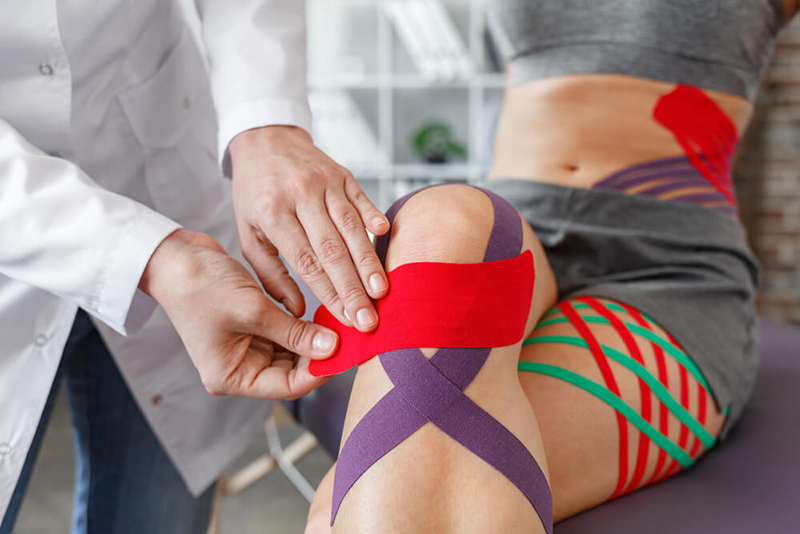
Zu den häufigsten Knieverletzungen zählen:
ACL-Verletzung
Bei einer ACL-Verletzung handelt es sich um einen Riss des vorderen Kreuzbandes (ACL) – eines der vier Bänder, die Ihr Schienbein mit Ihrem Oberschenkelknochen verbinden. Eine ACL-Verletzung kommt häufig bei Menschen vor, die Basketball, Fußball oder andere Sportarten spielen und plötzliche Richtungswechsel erfordern.
Frakturen
Die Knieknochen, einschließlich der Kniescheibe (Patella), können bei Stürzen oder Autounfällen brechen. Auch Menschen, deren Knochen durch Osteoporose geschwächt sind, können manchmal einen Kniebruch erleiden, wenn sie einfach nur falsch auftreten.
Gerissenen Meniskus
Der Meniskus ist der zähe, gummiartige Knorpel, der als Stoßdämpfer zwischen Schienbein und Oberschenkelknochen fungiert. Er kann reißen, wenn Sie Ihr Knie unter Belastung plötzlich verdrehen.
Schleimbeutelentzündung im Knie
Bei manchen Knieverletzungen kann sich der Schleimbeutel entzünden, was zu einer Schwellung an der Vorderseite des Knies führt. Eine Schleimbeutelentzündung tritt auf, wenn Ihr Schleimbeutel häufig gereizt, beschädigt oder infiziert ist und zu viel Flüssigkeit produziert.
Patellaspitzensyndrom
Eine Tendinitis verursacht eine Reizung und Entzündung einer oder mehrerer Sehnen – des dicken, faserigen Gewebes, das Muskeln mit Knochen verbindet. Läufer, Skifahrer, Radfahrer und Personen, die Sprungsportarten und -aktivitäten betreiben, können eine Patellaspitzensyndrom entwickeln.
Wie können Sie Schmerzen in verschiedenen Kniebereichen verhindern und lindern? Die meisten Menschen verwenden Kinesiologisches Tape für das Knie.
Was ist Kinesiologie Tape für das Knie?
Kinesiologisches Tape für das Knie ist ein Muskelschmerzband aus Materialien wie Baumwolle und Elasthan. Es ist sehr dehnbar und fühlt sich leicht an. Es liegt hautnah und bequem an und wird häufig im Sport und in der Physiotherapie verwendet, um Muskeln und Gelenke zu stützen und die Genesung zu fördern. Für die Kniescheibe oder Kniescheibe kann Kinesiologisches Tape für das Knie auf bestimmte Weise angewendet werden, um Halt zu bieten, die Durchblutung zu verbessern und Schmerzen zu lindern, die mit Erkrankungen wie Patella-Tracking-Störung oder Patellasehnenentzündung verbunden sind.
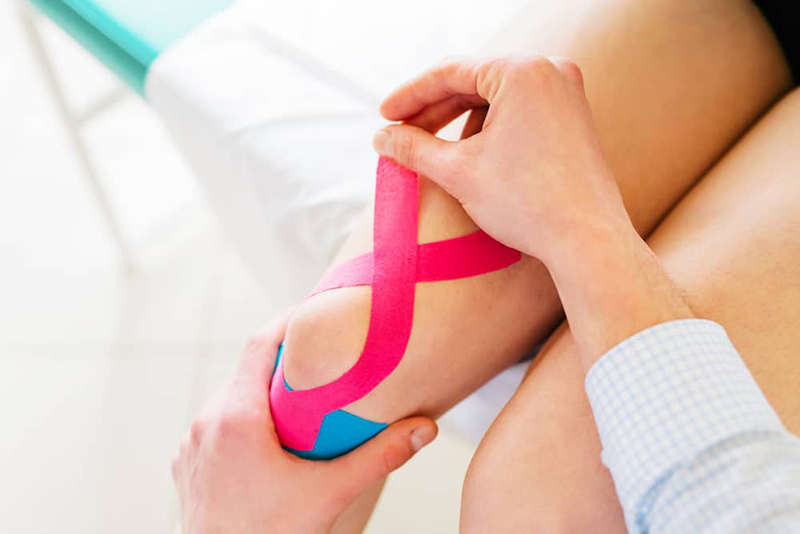
Welche Wirkung hat Kinesiologie-Tape für das Knie auf Ihre Knie?
1. Lindert Schmerzen und Beschwerden
Ihre Knie spielen eine wichtige Rolle bei der Bewegung Ihres Körpers. Bei Verletzungen müssen andere Muskelgruppen (wie der untere Rücken oder die Oberschenkel) die Belastung ausgleichen, was zu einer Kettenreaktion von Steifheit und Schmerzen in mehreren Bereichen des Körpers führen kann. Daher können Muskelschmerzstreifen helfen, Knieschmerzen zu lindern und gleichzeitig Schmerzen an anderen Stellen zu lindern oder zu reduzieren.
2. Reduzieren Sie das Risiko weiterer Verletzungen
Knieschmerzen ist nur eines von vielen Problemen, die mit den Knien auftreten können. Und da Knie eine Kombination aus Stärke und Fragilität darstellen, können sich schnell weitere Probleme entwickeln, wenn Sie nicht vorsichtig sind. Das Kinesiologie-Tape für das Knie stützt und schützt Ihr Knie bei Bewegungen und hilft Ihnen, bestehende Verletzungen nicht zu verschlimmern oder neue zu verursachen.
So verwenden Sie Kinesiologie-Tape für das Knie zur Linderung von Knieschmerzen?
Stellen Sie sicher, dass die Haut an und um Ihre Knie sauber und trocken ist.
1. Schneiden Sie zwei etwa 25 cm lange Stücke des Sportverletzungs-Tapestreifens ab (die Länge richtet sich nach dem Knie) und achten Sie darauf, dass die Kanten abgerundet sind.
2. Setzen Sie sich (oder die Person, die Sie behandeln) auf einen Hocker und beugen Sie Ihre Knie im rechten Winkel (90 Grad).
3. Ziehen Sie die Schutzfolie der ersten 3 cm des Kinesiologie-Tapes für das Knie ab und kleben Sie es auf die Oberseite der Kniescheibe, direkt über der Innenseite des Kniegelenks.
Sobald es befestigt ist, dehnen Sie das Kinesiologie-Tape für das Knie auf die Elastizität 65% und bringen Sie es an der Innenseite des Kniegelenks an.
4. Entfernen Sie einen Teil des zweiten Muskelschmerzstreifens, um ihn zu befestigen, dehnen Sie ihn auf 65% und wickeln Sie ihn um die Vorderseite der Kniescheibe.
5. Wischen Sie über die Oberfläche des Muskelschmerzstreifens, um den Klebstoff zu aktivieren.
Video zum Kinesiologie-Tape für das Knie ansehen
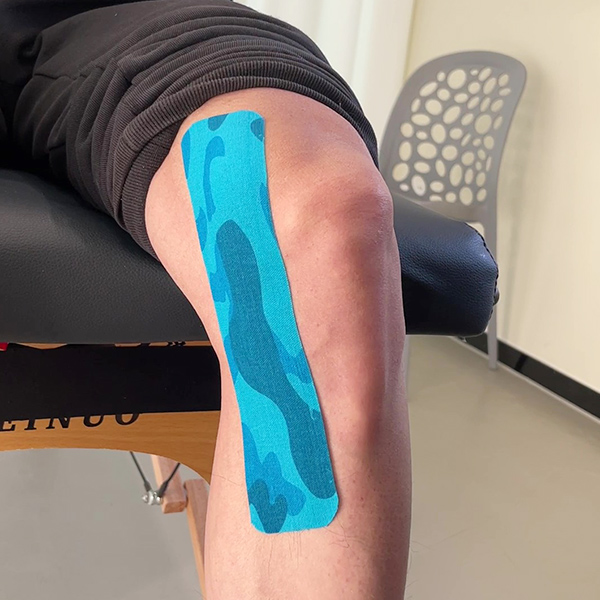
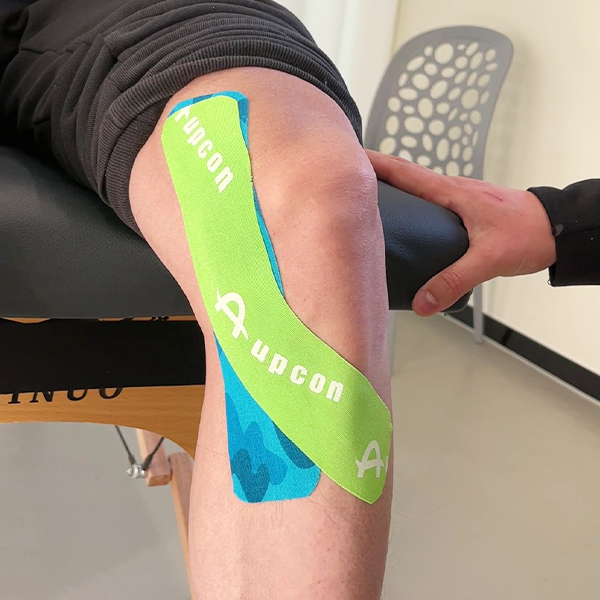
Wie tapen Sie Ihr Knie, um die Kniescheibe auszurichten?
Stellen Sie sicher, dass die Haut an und um Ihre Knie sauber und trocken ist.
1. Bereiten Sie ein Y-förmiges und zwei L-förmige Kinesiologie-Tapes für das Knie vor (bitte messen Sie das Knie für die spezifische Länge und vergleichen Sie es mit dem Bild).
2. Setzen Sie sich (oder die Person, die Sie behandeln) auf eine Bank und beugen Sie die Knie.
3. Ziehen Sie 3 cm der unteren Schutzfolie des Y-Tapes ab und befestigen Sie es in der Mitte des oberen Oberschenkels. Ziehen Sie die verbleibenden Enden des Therapietapes 30% entlang der linken und rechten Enden der Kniescheibe, bis sie passen.
4. Die vorderen Enden der beiden L-förmigen Kinesiologie-Tapes für das Knie abreißen und unter der Kniescheibe fixieren. 50% nach links und rechts dehnen, um die Kniescheibe zu fixieren.
5. Wischen Sie die Oberfläche der Sportverletzungs-Tape-Streifen ab, um den Klebstoff zu aktivieren.
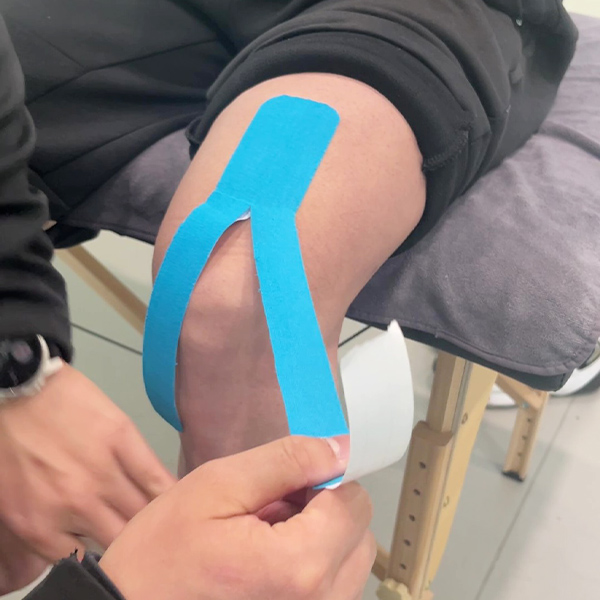

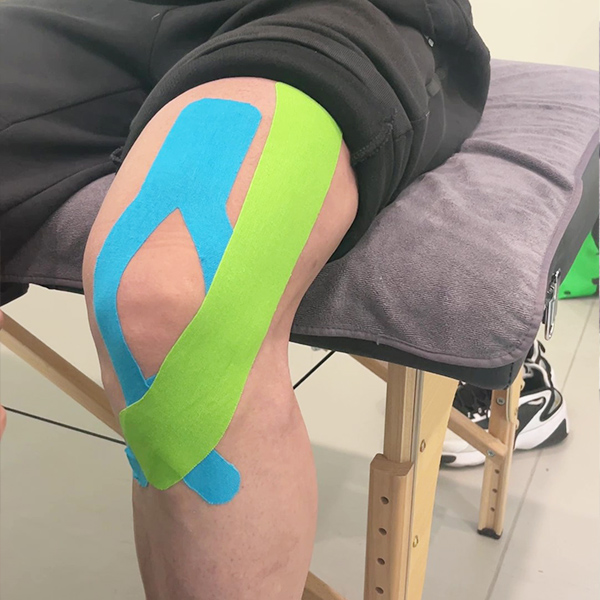

So entfernen Sie Kinesiologie-Tape sicher für die Knie?
1. Kinesiologie-Tape für das Knie hat in der Regel einen anderen Klebstoff als starres Sportband, das durch Wärme aktiviert wird. Um das Therapietape bequem und ohne Belastung des Kniegelenks zu entfernen, empfiehlt es sich, Öl (zum Beispiel Oliven- oder Babyöl) aufzutragen. Reiben Sie das Öl in und um den Klebebandkleber ein, um die Klebrigkeit zu verringern, und lassen Sie es mindestens 15 Minuten einwirken. Nach dem Auftragen des Öls sollte sich das Kinesiologietape unter einer warmen Dusche oder mit warmem Wasser und einem Schwamm schnell von der Haut lösen.
2. Entfernen Sie den Muskelschmerzstreifen langsam und vorsichtig, um Hautreizungen zu vermeiden. Die beste Methode besteht darin, den Sportverletzungsstreifen wieder an seinen Platz zu rollen, anstatt ihn von der Haut wegzuziehen. Um Beschwerden zu reduzieren, drücken Sie auf die Haut, während Sie den Muskelschmerzstreifen in die entgegengesetzte Richtung entfernen.
Lesen Sie weiter, um mehr zu erfahren über Wie benutzt man Kinesiologisches Tape? auf den Knien, um verschiedene Beschwerden zu behandeln.
Auf der Suche nach dem günstigsten Kinesiologie-Tape?
Das billigste Kinesiologie-Tape ist natürlich in der Fabrik. Das billigste Kinesiologie-Tape ist das ohne den Zwischenhändler, der den Unterschied macht. Zum Beispiel: AUPCONDer führende Hersteller von kinesiologischen Tapes in China. Kontaktieren Sie uns jetzt, um Großhandelspreise zu erhalten.

